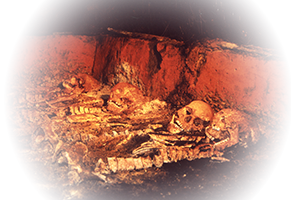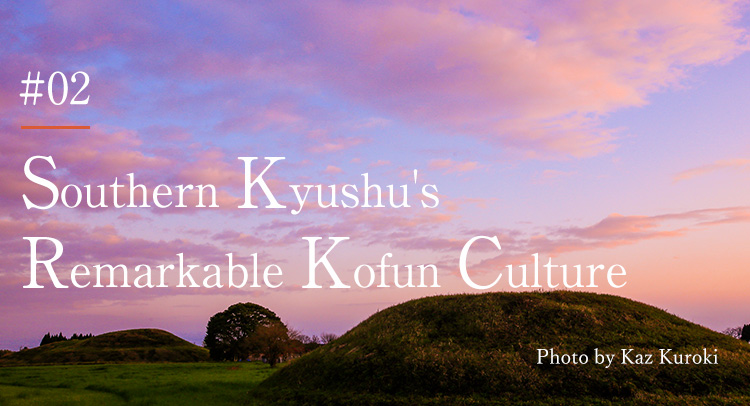Photo by Kaz Kuroki
Grave goods from underground tunnel tombs: Insights into familial relations gleaned from human bones
地下式横穴墓の副葬品~人骨からわかる親族関係~

地下式横穴墓の副葬品~人骨からわかる親族関係~

Chest Armour from Saitobaru Underground Tunnel Tomb No.4
Tunnel tombs in areas such as northern Kyushu have the following aspects in common: firstly, work on their creation commenced upon the death of the head of the family head; and secondly, they do not contain the individual's spouse. However, in many cases females or sometimes children were interred first, something that continued into the 7th century, until the end of the Kofun period. This suggests a burial system based on the principle of siblings, along with familial relations based on bilateral descent through the principles of both matrilineality and patrilineality. Therefore, the area's burial culture provides important insights into the status of bilateral descent in the wider context of human history. While there are striking characteristics and varying concentrations in the kinds of grave goods found in underground tunnel tombs, the structure and size of the tombs are uniform.

Excavated Goods from Saitobaru Underground Tunnel Tomb No.4
The burial of grave goods with females is often seen and is universal among societies with underground tunnel tombs. In societies with bilateral descent, property rights are also inherited and continued along the matrilineal line. Underground tunnel tombs provide a wealth of evidence on the past, giving a clear picture of how the individuals buried inside maintained relations with royal authorities in the Kinai region and the Korean Peninsula, and that they were important enough to have been buried in tombs of such a scale. The size of the burial chambers is not so prominent, with value not having been ascribed to the scale of burial chambers in terms of hierarchy. While the family head possessed a diversity of grave goods in large quantities rivalling those found in keyhole-shaped burial mounds, it was not a society in which the hierarchies of groups in Shimauchi, who constituted a subordinate position, were more stratified.




